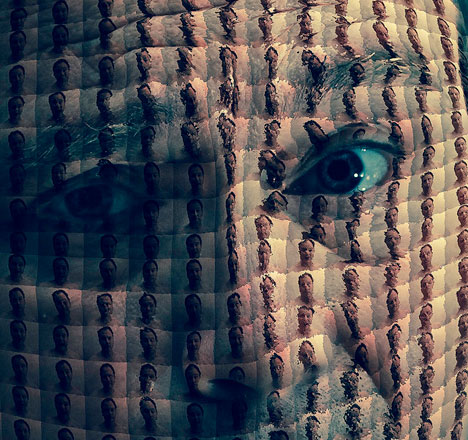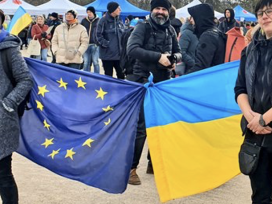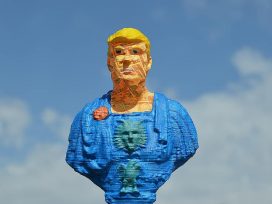We should, by now, be tired of the selfie. It has been everywhere, done everything, and everybody and their president has taken one. The selfie has been in space, under water, in the most intimate spaces of sexual intercourse and at the most public award ceremonies in Hollywood. The selfie, one would have thought, could just retire from public view, determined to spend the rest of its time in tranquil ignominy, only to be invoked in nostalgic conversations about when Pluto was a planet, Hello Kitty was a cat, and the selfie was something that we all did. And yet, just when you think the selfie has had its day, and Internet trend gurus speculate about the next new fad, it comes back with the resilience of a cockroach, finding new ways of populating the zeitgeist of the digital web. We might as well resign ourselves to the fact that the selfie is here to stay.

Photo: Patrik Theander. Source:Flickr
If you are a part of the selfie parade you must know that it is a misnomer to refer to the selfie as if it were just one thing. The image of a single face pouting at the camera on a phone clumsily extended to the perfect angle from which to capture how we think we look to the rest of the world: this is just the beginning of the story. Now, because we can never stop at one, twofies and groufies have become regular events, and the selfie has diversified so that it’s not restricted to the face alone. The belfie (butt selfie) as made popular by Kim Kardashian (look, she had to be mentioned once, we’re done now) or the feet selfie, probably made popular by somebody who we don’t know because we could only see their feet, and the #torsoshot, which has finally established that young men should be seen and not heard, have all entered into the visual vocabulary that circulates of our times of spectacle.
Part of the allure of the selfie lies in the promise of authenticity that it contains. Even when we Instagram a selfie to death, editing, cropping, filtering and formatting it to make it look like the image of ourselves that we see in our heads, there is a firm belief that the selfie marks us in the here and the now. Like an expert witness testifying to the presence of a tree falling in a lonely forest, the selfie more or less establishes that beyond the cosmetic manipulations that transform the self into the selfie, is the real you, in real time, in real space, doing some real things that are so engrossing, exciting, fun and absorbing, that you had to capture the moment and then delay experiencing it just a little bit while you upload it to your social network of choice. Which is why the selfie survives and in a world of simulated reality and distributed identities, it remains the one real thing that produces the “right now” as a moment of future nostalgia.
It is in this selfie saturated world that recent news headlines in Bollywood, in India, caught my attention. A new celebrity actress, Radhika Aapte, was responding to “fake selfies” of her being circulated on the viral pornographic grapevine of the digital web. The images that claimed to show her in states of undress, mimicking the Fappening phenomena that selfies have been at the centre of, were summarily dismissed by Aapte as “fake selfies”. I do think it an indication of the selfie aesthetic that these images were not being questioned as inauthentic, fake or misattributed per se, but as “fake selfies”. If you thought that the selfie was the embodiment of the promise of WYSIWIG – so that what you see is exactly what you get – then the notion of a “fake selfie” is fascinating. Also, given that selfies are fake – Kim Kardashian takes three hours of bodily preparation to get that perfect selfie which she then tweets to her millions of followers (ok, so I mentioned her again! Go take a selfie!) – and subject to constant filtering and manipulations, what would a fake selfie contain, and what then is a real selfie?
The Aapte “scandal” died a quick death, as more selfies of more people were circulated and shared on the Interwebz. Yet the episode does bring to the fore the question of what a selfie means. A selfie, in its narrowest definition, is an image that somebody takes with a portable camera, generally embedded in a phone, and then through quick digital manipulations, uploads online, where it can be shared and introduced into a space of digital circulation. However, that is taking the selfie too literally. The selfie is not just a thing, it is a form. It defines aesthetic frames of reference, different routes of circulation, a transaction economy of likes and shares, a social negotiation of friendship and intimacy, and a mechanism of verification, authorization and authentication which are often hidden in the discounting of the selfie as merely fun and games.
If we were to take the selfie seriously and look at not only its popularity but also its presence in our daily consumption of visual cultures, we would realize that the selfie is everywhere. It is not just an object but a genre that encompasses everything from encounters with the Pope to posing at a funeral. The selfie has its own anthem, and it has become the dominant aesthetic of user-generated porn. To discount the selfie is to not recognize that the selfie mixes memory and desire, longing and belonging, to present the self in an everyday web. Selfies are not just about click-smile-share but embody a larger industry of machines recognizing us through biometric datasets and curatorial algorithms. Because when you take a selfie, you are not just presenting yourself, you are also subjecting yourself to a series of authorizations that take place on your behalf.
Look at the programme of actions that can be mapped from the moment you take the selfie to the time it starts circulating in the web. As you point your camera at your pouty face, software is already recognizing your biometric data and storing it in your picture. This is how the autofocus function in the camera recognizes which part of the picture is your face and focuses on it. At the same time, geolocation software has captured the essential information of where this selfie is being taken, the time of the day, the date and the details of the device being used for it. All this metadata gets stored even before the selfie is taken. Once the digital shutter clicks redundantly, the selfie is stored on your phone. If you have an automatic backup of your pictures, it has been saved on to the cloud. If it is being shared or distributed in real time, the cloud is already predicting which of your friends will view it first. As you manipulate the images, adding different filters and trying out the best effect, the application that you are using is monitoring your preferences, your facial expressions, browsing patterns, and storing that information in the cookies on your phone. Once you press go, the image gets stored on the servers of the application in multiple forms, formats and sizes and starts traveling through notifications, through push and pull mechanisms that identify you. As more and more of your “friends” and “followers” “like” your selfie, more information is gleaned from you. Your friends’ preferences, locations, interactions and comments help verify that this is a genuine selfie. Your profile is not just about you in the picture but all the others who communicate with you through that picture, thus generating a complex relationship map of different things and people that you interact with.
As your picture becomes popular and you bask in the glory of a thousand “likes”, the algorithms start a series of correlations that match your picture to the other pictures in its database that are associated with your unique identifier on that system. The same picture can also travel to other databases. If you take a selfie on one platform, it automatically gets tagged to the profiles on other platforms that have a data sharing agreement. Other systems that you are connected with – like your bank, your mobile wallet, your insurance companies – and which harvest these social networks for their data also get a copy of your selfie, which is also available to potential bosses and current colleagues, who might be sharing your digital social space. The act of initiating that one selfie triggers an avalanche of data that is generated, collated, curated and consolidated beyond your imagination or control. And because the selfie is the authentic, the real, the actual and the factual indication of your self, it becomes a way of authenticating the real you. This composite quantified selfie profile can have unexpected and surprising consequences. For instance, following your selfie on Facebook and using it as the point of consolidation of all your data, allows a script to figure out what your sexual orientation is. Whether or not you have disclosed it or not. Similarly, your selfie on Twitter can easily be matched with a leaked picture of you on a Slut Shaming website, and algorithms can put two and two together and start publishing your Twitter handle, your public websites and contact information on to those compromising images. Or, an adventure sport selfie might eventually finds its way into the insurance databases which might charge you a higher premium on your life policy because of the risky life choices that you make.
Discounting the selfie as merely a representation of oneself hides the fact that selfies have agency. They might depend upon the human to click a given button, but beyond that, the tasks that selfies perform are insidious and follow the narrative structures of espionage stories. Thinking about the selfie as a genre, and looking at this bewildering set of actions, transactions and mechanisms that it catalyses, also allows us to realize that selfies are not just about the individual taking her picture. It isn’t just you and your phone. Selfies can be faked, and they are increasingly a mode of presenting fiction so that it looks like reality.
It is also necessary to realize that selfies are not just contingent on human agency. Non-human selfie takers surround us. From surveillance cameras on street corners to drones hovering outside our windows, from hidden spy cams that record our intimacy to the iris scans conducted at official intersections, our selfies are being taken, mapped, matched and consolidated well beyond the celebrated idea of self-expression and presentation. Selfies are not just pictures, but they are the beginning of the big data self which is counted, accounted for and held accountable for the digital data that is captured around it. The selfie is the point of obfuscation where correlation and causality meet. The selfie in itself is not important in terms of content. It is not about whether you look like this or not, as long as you are legible and intelligible to the systems of authorization, verification and quantification that store and remember all the data chains and traffic routes that the selfie makes your self travel through.
The selfie, then, is both a counting and an accounting structure. It counts us but it also accounts for us, creating connections and catalysing transactions that override and undermine the self. As the selfie continues to quantify us, ensuring that we are who we are and do what we say on the digital web, there is a need to make the selfie accountable for this process. The selfie as a manifestation of the quantified self, that is, of the processes that convert us into data pods that can be harvested and mined, leaked and recombined, the very processes that transform us into data subjects. It is important to understand that the selfie is not one thing. It exists and is embedded in a complex ecology of data interaction – what is sometimes called Big Data. The selfie therefore needs to be subjected to greater scrutiny, especially in terms of how it might make vulnerable the self that is being captured and conscripted in the digital circuits that it travels through.







